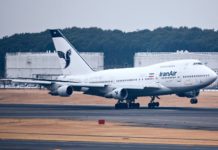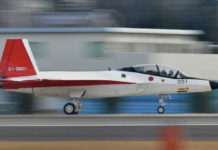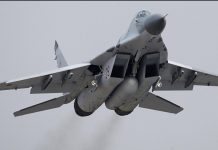Air New Zealand will increased use of turboprop aircraft will offer customers more choice on main trunk routes.
But one passenger has criticised the planes as slower, noisier, and more cramped, and has questioned why they are paying the same for them as a jet aircraft service.
The New Zealand Airline Pilots’ Association has also raised concerns about the lack of security on these flights, as security screening in New Zealand is currently restricted to planes with 90 seats or more.
Christchurch businessman and frequent traveller Kevin Dore wrote in an opinion piece this month that nine out of 11 flights from Christchurch to Wellington on a typical day are now serviced by ATR or Q300 turboprop aircraft.
“There are no security checks on passengers boarding an ATR or Q300,” he said. “Probably because hijackers and terrorists don’t like flying in them either.”
In response, Air New Zealand spokeswoman Kelly Kilgour said the airline had announced some amendments to its domestic schedule earlier this year aimed at delivering “a more consistent and less complex schedule”.
“The changes once fully implemented by the end of October, will see frequency and capacity growth on main trunk routes to offer business customers more choice while also improving connections to regional destinations,” she said.
Air New Zealand services between Christchurch and Wellington are currently operated by a combination of 68-seat ATR and 50-seat Q300 aircraft.
Aircraft types were displayed when a customer selected their desired flight, Kilgour said.
“We have made some amendments to our schedule however for this route aimed at delivering improved connectivity, consistency and choice for customers and extending the business day for customers in both cities.”
From October 30, Air New Zealand would offer an average of 20 daily return services on weekdays, the majority of which would be operated by ATR aircraft, with larger Airbus A320 jets at morning and evening peak times.
Kilgour said while turboprop aircraft were slower, the difference in flight time between the ATR and A320 was 17 per cent – approximately 10 minutes shorter in both directions.
“With any route, we look to match capacity to demand and while we can deploy A320 aircraft between Christchurch and Wellington, it’s a trade-off between fewer flights carrying more people and more flight flexibility throughout the day using smaller aircraft,” she said.
Air New Zealand also operates ATR aircraft between Wellington and Queenstown, and Wellington and Dunedin. From October, the airline will add five additional return jet services a week between Wellington and Dunedin.
Meanwhile Jetstar operates 50-seat Q300 turboprop aircraft on five routes in New Zealand, including to Nelson, New Plymouth, Napier and Palmerston North. A spokesman said the airline had no plans to expand its Q300 network beyond regional links.
New Zealand Airline Pilots’ Association senior technical officer Dave Reynolds said the use of turboprop aircraft came down to economics.
“Jets are more expensive to run than turboprops. If they don’t put turboprops on, there may be no service, if it’s not viable,” he said.
Reynolds said it was the association’s view that “everybody and everything” going onboard an aircraft should be screened.
Source: STUFF









